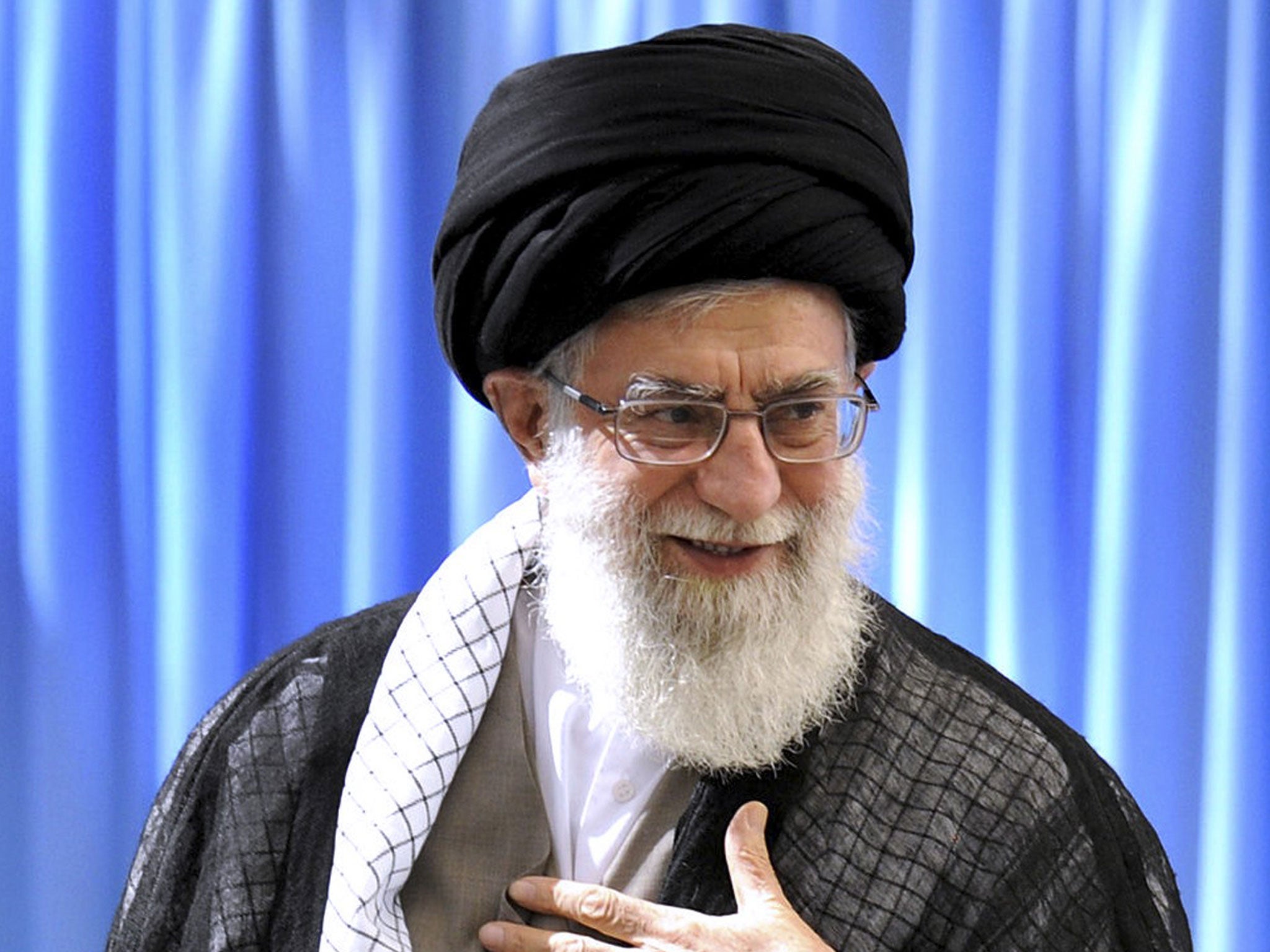Iran’s Supreme Leader runs business empire worth £60bn

Your support helps us to tell the story
From reproductive rights to climate change to Big Tech, The Independent is on the ground when the story is developing. Whether it's investigating the financials of Elon Musk's pro-Trump PAC or producing our latest documentary, 'The A Word', which shines a light on the American women fighting for reproductive rights, we know how important it is to parse out the facts from the messaging.
At such a critical moment in US history, we need reporters on the ground. Your donation allows us to keep sending journalists to speak to both sides of the story.
The Independent is trusted by Americans across the entire political spectrum. And unlike many other quality news outlets, we choose not to lock Americans out of our reporting and analysis with paywalls. We believe quality journalism should be available to everyone, paid for by those who can afford it.
Your support makes all the difference.Iran’s Supreme Leader Ayatollah Ali Khamenei controls a business empire worth around £60 billion – a sum exceeding the value of his oil-rich nation’s annual petroleum exports – a six-month Reuters investigation has found.
The little-known organisation, called Setad, is one of the keys to the Iranian leader’s enduring power and now holds stakes in nearly every sector of Iranian industry, including finance, oil, telecommunications, birth-control pills and even ostrich farming.
Setad has built its empire on the systematic seizure of thousands of properties belonging to ordinary Iranians – members of religious minorities, Shia Muslims, business people and Iranians living abroad.
The Reuters investigation documents how Setad has amassed a giant portfolio of real estate by claiming in Iranian courts, sometimes falsely, that the properties are abandoned. The organisation now holds a court-ordered monopoly on taking property in the name of the Supreme Leader, and regularly sells the seized properties at auction or extracts payments from the original owners. Reuters identified nearly 300 properties that Setad put up for auction in May alone, many worth millions of dollars.
The organisation’s full name in Persian is “Setad Ejraiye Farmane Hazrate Emam” – Headquarters for Executing the Order of the Imam. The name refers to an edict signed by the Islamic Republic’s first leader, Ayatollah Ruhollah Khomeini, shortly before his death in 1989. It spawned an entity to manage and sell properties abandoned in the chaotic years after the 1979 Islamic Revolution. According to one of its co-founders, Setad was created to help the poor and war veterans and was meant to exist for just two years.
Almost a quarter-century on, Setad has morphed into a business juggernaut. While Setad controls a charitable foundation, it’s not clear how much money goes to charity.
Under Khamenei, the organisation has expanded its corporate holdings, buying stakes in dozens of Iranian companies, both private and public, with the stated goal of creating an Iranian conglomerate to boost the country’s economic growth.
In June, the US Treasury Department imposed sanctions on Setad, calling the organisation “a massive network of front companies hiding assets on behalf of ... Iran’s leadership”.
Setad’s director-general of public relations, Hamid Vaezi, said the investigation is “far from realities and is not correct”. In a subsequent message, he said Setad disputes the Treasury’s allegations and is “in the process of retaining US counsel to address this matter”.
Setad’s worth is difficult to pinpoint because of the secrecy of its accounts. Reuters estimates it at around $95 billion (£60 billion), made up of about $52 billion (£32 billion) in real estate and $43 billion (£27 billion) in corporate holdings. The estimate is based on an analysis of statements by Setad officials, data from the Tehran Stock Exchange and information from the US Treasury Department.
There is no evidence that Khamenei is tapping Setad to enrich himself. But Setad has empowered him. He has at his disposal financial resources whose value rivals the holdings of the shah, the Western-backed monarch who was overthrown in 1979.
As Iran’s top cleric, Khamenei has final say on all governmental matters. His purview includes his nation’s controversial nuclear program, which was the subject of intense negotiations between Iranian and international diplomats in Geneva that ended on Sunday without an agreement.
The investigation shows that as well as political and military force, there is a third dimension to Khamenei’s power: economic might. The revenue stream also helps to explain why he has held on at the top for 24 years.
REUTERS
Join our commenting forum
Join thought-provoking conversations, follow other Independent readers and see their replies
Comments